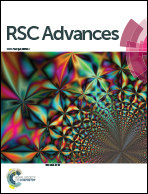Phosphine gas generated from an aluminium phosphide tablet exhibits early knock down effects on tamarind pod borer
Abstract
The tamarind pod borer, Sitophilus linearis (Herbst), causes severe damage to the seed pods of tamarind (Tamarindus indica L.) in the field and during storage. The seeds pods are either sun dried or treated with neem seed oil to get rid of the weevil infestation during storage. Herein, we study the effect of phosphine (PH3) against S. linearis and compare its response with the susceptible and resistant strain of rice weevil, Sitophilus oryzae (L.), which is a commonly stored product pest. The dose-mortality response indicates that the adults of S. linearis are relatively more susceptible to PH3 than the phosphine-susceptible strain (SO-24) of S. oryzae. At 72 h, PH3 induces 100% mortality to the adults of S. linearis at a low test concentration of 0.001 mg L−1, on the other hand for S. oryzae, 0.025 and 0.243 mg L−1 concentrations are required to induce complete mortality in the PH3-susceptible (SO-24) and resistant (SO-106) strains of S. oryzae. The results of the present study imply that S. linearis can be easily mitigated at a concentration of 0.001 mg L−1 over 72 h exposure, which is well below the recommended dosage of 2.25 mg L−1 over 168 h exposure required for managing S. oryzae infestation.


 Please wait while we load your content...
Please wait while we load your content...